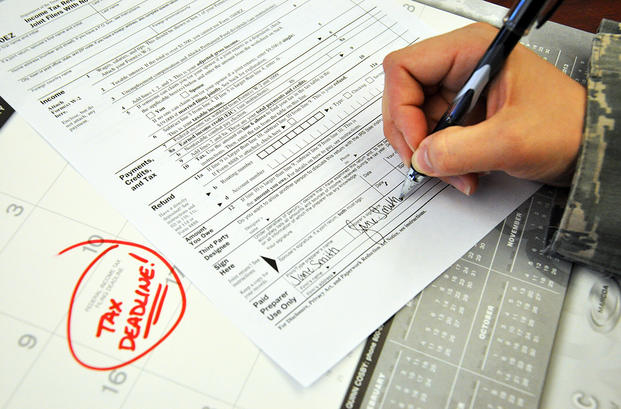This article written by Gina Harkins originally appeared on the Military Officers of America Association (MOAA) website.
Service members and their families are likely to fall into new tax brackets when filing their returns for 2018 - and it could result in some cash savings for some.
Republicans in Congress celebrated a major legislative win last week with President Donald Trump's signing of the Tax Cuts and Jobs Act Dec. 22. The changes keep the standard seven tax brackets, but the income rates for each - and most of the tax rates - are about to change.
Trump said last week that the typical family of four earning $75,000 will see an income tax cut of more than $2,000. “And that's - in my opinion - going to be less than the average,” he added. “You're going to have a lot more than that.”
Sen. Claire McCaskill (D-Mo.) a member of the Senate Armed Services Committee, disagrees. The Tax Cuts and Jobs Act should've done more for working families, she said, instead of the rich and powerful.
How real-world outcomes will shake out in years to come is still up for debate. Taxes are complicated, experts warn, and savings will depend on a host of factors like number of dependents, location, and deductions.
Here's a look at how some officers' tax brackets could change based on income and marital status alone.
- A single ensign or second lieutenant with less than two years in who lives in San Diego and makes about $36,420 annually will see their tax rate drop from 15 percent to 12. That could leave those officers pocketing about an extra $1,100 a year.
- A married chief warrant officer five with more than 20 years in who lives near Quantico, Va., and makes $89,232 will see their tax rate drop from 25 percent to 22. That 3-percentage-point drop equals nearly $2,700.
- A married lieutenant colonel based at Fort Bragg, N.C., who's served at least 16 years and makes just under $100,000 annually also will see their rates drop from 25 percent to 22. Those officers would keep an additional $3,000 a year.
- A single major based in Hawaii who's served more than 12 years and makes about $86,000 a year will fall into a new tax bracket. Under the old income bracket, they would've been taxed at 25 percent. That will drop to 24 percent under the new plan, saving those officers about $860 a year.
Under the new plan, single filers who make less than $10,000 a year still will see their income taxed at 10 percent. Because most Americans make more than that amount, though, supporters say the bulk of the population will see their tax bills drop.
This article, "How Military Officers’ Tax Brackets Could Change Under the New Reform Plan," originally appeared on the Military Officers of America Association (MOAA) website. MOAA is the nation's largest and most influential association of military officers.




